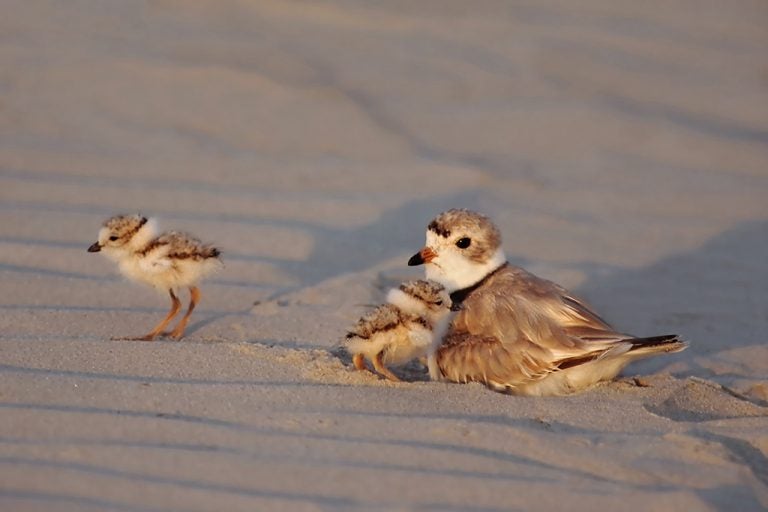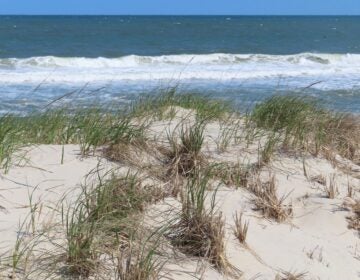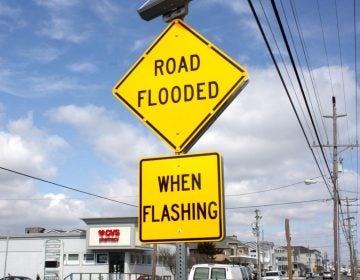2019 was a record year for piping plovers along the Atlantic coast
The endangered piping plovers saw record-setting numbers along the Atlantic coast in 2019, federal officials say.

Piping plover with chicks in Cape May, N.J. (Courtesy of Kevin Karlson)
The endangered piping plovers saw record-setting numbers along the Atlantic coast in 2019, federal officials say.
According to the U.S. Fish and Wildlife Service, the population of the small, sandy-colored shorebirds increased from 1,879 pairs in 2018 to a record high of 2,008 pairs breeding during the summer of 2019 from eastern Canada to North Carolina.
Wildlife officials say it’s a testament to 35 years of conservation and the widespread implementation of management practices, including the installation of symbolic fencing around nests, leashing dogs, posting caution signs, reducing predation, and asking beachgoers to modify their activities near birds and fenced areas.
“While we still have much work to do, the growth we’ve seen in the Atlantic Coast piping plover population, especially in New England, is the clearest possible evidence that we can achieve and maintain recovery,” said U.S. Fish and Wildlife Service piping plover recovery coordinator Anne Hecht. “We are incredibly grateful for decades of ongoing dedicated conservation by all levels of government and other organizations.”
In New Jersey, while the shorebird’s population also increased in 2019, researchers said they are cautiously optimistic about long-term prospects.
Highlights from Conserve Wildlife Foundation of New Jersey’s 2019 piping plover report, which provides the number of nesting pairs, active nests, and nest productivity throughout New Jersey, include 27 sites where pairs nested, up significantly from just 19 sites in 2018.
One hundred and fourteen pairs of piping plovers nested in New Jersey in 2019, a 19% increase from 2018, which logged 96 pairs — the third lowest since 1986, when the birds were protected under the Endangered Species Act, according to the report.
Researchers say the 2019 population is slightly below the long-term average of 117 pairs and significantly less than the peak of 144 pairs in 2003.
But productivity — the measurement of the number of young birds that fly, or fledgling, per pair — dropped considerably from 1.51 in 2018 and 1.24 in 2019 and was the lowest level in the last six years, the researchers found. Still, productivity is well above the long-term average since 1986.
In line with previous years, researchers discovered that nearly three-quarters of the state’s piping plover population was in federal parks (Gateway National Recreation Area’s Sandy Hook Unit and E.B. Forsythe National Wildlife Refuge’s Holgate and Little Beach Units) in 2019.
“The importance of these federal lands in New Jersey is paramount. They provide the state’s premier nesting and foraging habitats, and recreational use can be better managed than elsewhere in New Jersey,” the team noted, adding that habitat outside of federal areas is not suitable due to human disturbance, stabilization efforts, and beach grooming.
The researchers encourage managers of municipal and state beaches to mimic natural conditions as much as possible to encourage more piping plover nesting.
In 2019, state officials restricted beach buggy traffic in a portion of Island Beach State Park due to nesting piping plovers. Piping plovers have nested in Island Beach State Park over recent summers, beginning in 2016.
Before that, they were last spotted in the state park in 1989. Conserve Wildlife Foundation of New Jersey biologists speculate that Superstorm Sandy’s creation of more open habitat may be responsible for the piping plovers’ return to Island Beach State Park.
WHYY is your source for fact-based, in-depth journalism and information. As a nonprofit organization, we rely on financial support from readers like you. Please give today.





